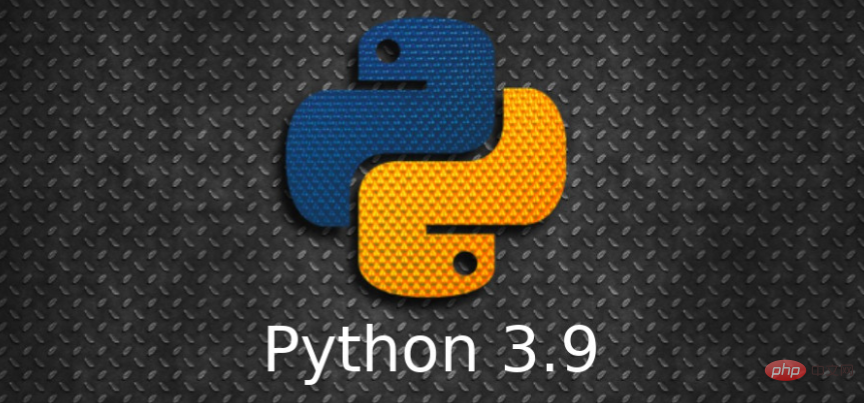終於介紹Python 3.9
今天欄目介紹Python 3.9。

Python 3.9,來了!
過去一年,來自世界各地的開發者們一直在致力於Python3.8的改進。Python 3.9 beta版本已經存在了一段時間,第一個正式版本於2020年10月5日釋出。
每個Python版本都包含新開發和改進的功能,Python 3.9也不例外。

【python學習交流群】
下面介紹Python 3.9幾個主要的新功能。
1. 字典(合併&更新)運運算元
字典是Python中最基礎的資料結構之一,並且隨著python版本的迭代,效能得到不斷地優化。
Python3.9中,合併(|)和更新(|=)運運算元已新增到dict類中。這些更新完善了現有的dict.update和{** d1,** d2}方法。
傳統合並字典的方法:
>>> pycon = {2016: "Portland", 2018: "Cleveland"} # 字典1>>> europython = {2017: "Rimini", 2018: "Edinburgh", 2019: "Basel"} # 字典2# 方法一>>> {**pycon, **europython}{2016: 'Portland', 2018: 'Edinburgh', 2017: 'Rimini', 2019: 'Basel'}#方法二>>> merged = pycon.copy>>> for key, value in europython.items:... merged[key] = value...>>> merged{2016: 'Portland', 2018: 'Edinburgh', 2017: 'Rimini', 2019: 'Basel'}複製程式碼這兩種方法都合併了字典而不更改原始資料。請注意,字典1中「Cleveland」已被合併的字典2中「Edinburgh」覆蓋。
你也可以更新字典1:
>>> pycon.update(europython)>>> pycon{2016: 'Portland', 2018: 'Edinburgh', 2017: 'Rimini', 2019: 'Basel'}複製程式碼新版本的Python引入了兩個新的字典運運算元:合併(|)和更新(|=)。你可以使用|合併兩個字典,而|=用於更新字典:
>>> pycon = {2016: "Portland", 2018: "Cleveland"}>>> europython = {2017: "Rimini", 2018: "Edinburgh", 2019: "Basel"}>>> pycon | europython # 合併{2016: 'Portland', 2018: 'Edinburgh', 2017: 'Rimini', 2019: 'Basel'}>>> pycon |= europython # 更新>>> pycon{2016: 'Portland', 2018: 'Edinburgh', 2017: 'Rimini', 2019: 'Basel'}複製程式碼d1|d2和{** d1,** d2}的作用類似,都用於合併字典取並集,遇到相同key,後者會將前者覆蓋。
使用|的優勢之一是它適用於類似字典的型別,並在合併後保持原來的型別:
>>> from collections import defaultdict>>> europe = defaultdict(lambda: "", {"Norway": "Oslo", "Spain": "Madrid"})>>> africa = defaultdict(lambda: "", {"Egypt": "Cairo", "Zimbabwe": "Harare"})>>> europe | africadefaultdict(<function <lambda> at 0x7f0cb42a6700>,{'Norway': 'Oslo', 'Spain': 'Madrid', 'Egypt': 'Cairo', 'Zimbabwe': 'Harare'})>>> {**europe, **africa}{'Norway': 'Oslo', 'Spain': 'Madrid', 'Egypt': 'Cairo', 'Zimbabwe': 'Harare'}複製程式碼|=的作用是更新字典,類似於.update:
>>> libraries = {... "collections": "Container datatypes",... "math": "Mathematical functions",... }>>> libraries |= {"zoneinfo": "IANA time zone support"}>>> libraries{'collections': 'Container datatypes', 'math': 'Mathematical functions','zoneinfo': 'IANA time zone support'}複製程式碼|=還可以將類似字典的資料結構用於更新:
>>> libraries |= [("graphlib", "Functionality for graph-like structures")]>>> libraries{'collections': 'Container datatypes', 'math': 'Mathematical functions','zoneinfo': 'IANA time zone support','graphlib': 'Functionality for graph-like structures'}複製程式碼2. 刪除字串字首和字尾
在Python 3.9中,可以使用.removeprefix和.removesuffix分別刪除字串的開頭或結尾:
>>> "three cool features in Python".removesuffix(" Python")'three cool features in'>>> "three cool features in Python".removeprefix("three ")'cool features in Python'>>> "three cool features in Python".removeprefix("Something else")'three cool features in Python'複製程式碼有人會說.strip方法也可以呀,但是該方法會出現誤刪操作:
>>> "three cool features in Python".strip(" Python")'ree cool features i'複製程式碼可以看到,明明想刪掉結尾的單詞python,但是開頭的there也被刪除了一部分-Th。
所以.removeprefix和.removesuffix可能更精準一些。
3. zoneinfo時區模組
zoneinfo是python3.9新引入的模組,zoneinfo可以存取Internet號碼分配機構(IANA)時區資料庫。IANA每年都會多次更新其資料庫,這是時區資訊的最權威來源。
使用zoneinfo,可以獲得資料庫中描述任何時區的物件:
>>> from zoneinfo import ZoneInfo>>> ZoneInfo("America/Vancouver")zoneinfo.ZoneInfo(key='America/Vancouver')
>>> from zoneinfo import ZoneInfo>>> from datetime import datetime, timedelta>>> # 夏令時>>> dt = datetime(2020, 10, 31, 12, tzinfo=ZoneInfo("America/Los_Angeles"))>>> print(dt)2020-10-31 12:00:00-07:00>>> dt.tzname'PDT'>>> # 標準時間>>> dt += timedelta(days=7)>>> print(dt)2020-11-07 12:00:00-08:00>>> print(dt.tzname)PST複製程式碼4. 內建集合型別用於型別提示
在型別提示中,現在可以將內建集合型別(例如list和dict)用作泛型型別,而不必從typing中匯入相應的大寫型別(例如List或Dict)。
def greet_all(names: list[str]) -> None:for name in names:print("Hello", name)複製程式碼5. 拓撲排序
Python 3.9新增了一個新的模組graphlib,其中包含graphlib.TopologicalSorter類,以提供執行拓撲排序的功能。
>>> dependencies = {... "realpython-reader": {"feedparser", "html2text"},... "feedparser": {"sgmllib3k"},... }...>>> from graphlib import TopologicalSorter>>> ts = TopologicalSorter(dependencies)>>> list(ts.static_order)['html2text', 'sgmllib3k', 'feedparser', 'realpython-reader']複製程式碼6. 最小公倍數(LCM)
Python長期以來一直具有用於計算兩個數位的最大公約數(GCD)的功能:
>>> import math>>> math.gcd(49, 14)7複製程式碼
最小公倍數(LCM)與最大公約數(GCD)有關,可以根據GCD定義LCM:
>>> def lcm(num1, num2):... if num1 == num2 == 0:... return 0... return num1 * num2 // math.gcd(num1, num2)...>>> lcm(49, 14)98複製程式碼
在Python 3.9中,不再需要定義自己的LCM函數,它新增了計算最小公倍數功能:
>>> import math>>> math.lcm(49, 14)98複製程式碼
7. 更強大的Python解析器
Python 3.9最酷的功能之一是大家在日常程式設計中不會注意到的功能,那就是解析器的更新。解析器是Python直譯器的基本元件。在最新版本中,解析器已重新構建。
Python之前一直使用LL(1)解析器將原始碼解析為解析樹。你可以將LL(1)解析器視為一次讀取一個字元,並解釋原始碼而無需回溯的解析器。
新直譯器是基於PEG(parsing expression grammar)實現的,並非LL(1)。新解析器的效能可以與舊解析器媲美,在設計新語言功能時,PEG比LL(1)更靈活。
在整個標準庫中,PEG解析器稍快一些,然而也使用了更多的記憶體。實際上,使用新解析器時,很難能感知到效能的好壞。
相關免費學習推薦:(視訊)
以上就是終於介紹Python 3.9的詳細內容,更多請關注TW511.COM其它相關文章!